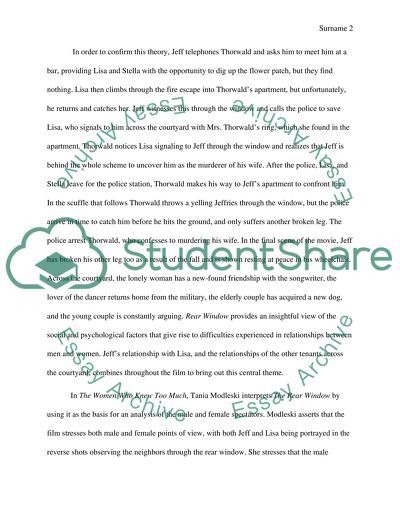Cite this document
(“Synthesis Essay on Rear Window Example | Topics and Well Written Essays - 1500 words”, n.d.)
Synthesis Essay on Rear Window Example | Topics and Well Written Essays - 1500 words. Retrieved from https://studentshare.org/visual-arts-film-studies/1473014-synthesis-essay-on-rear-window
Synthesis Essay on Rear Window Example | Topics and Well Written Essays - 1500 words. Retrieved from https://studentshare.org/visual-arts-film-studies/1473014-synthesis-essay-on-rear-window
(Synthesis Essay on Rear Window Example | Topics and Well Written Essays - 1500 Words)
Synthesis Essay on Rear Window Example | Topics and Well Written Essays - 1500 Words. https://studentshare.org/visual-arts-film-studies/1473014-synthesis-essay-on-rear-window.
Synthesis Essay on Rear Window Example | Topics and Well Written Essays - 1500 Words. https://studentshare.org/visual-arts-film-studies/1473014-synthesis-essay-on-rear-window.
“Synthesis Essay on Rear Window Example | Topics and Well Written Essays - 1500 Words”, n.d. https://studentshare.org/visual-arts-film-studies/1473014-synthesis-essay-on-rear-window.


